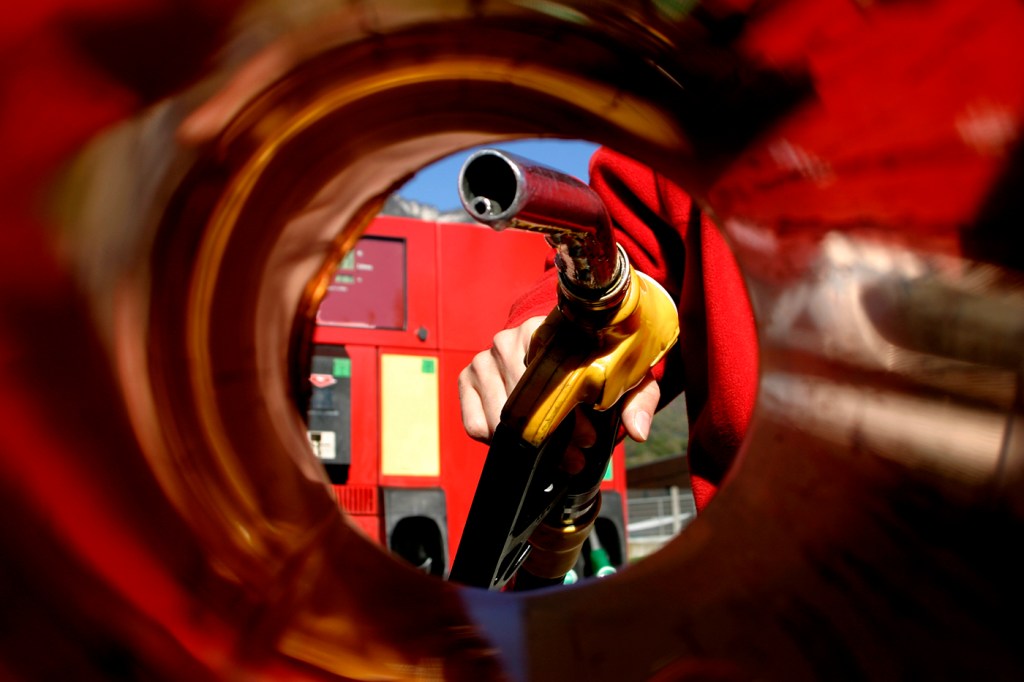Gas prices are going down, but will they continue to drop?
Between drought in the Panama Canal and conflict in the Red Sea, Americans shouldn’t expect gas prices to dip below $3 for long, a Northeastern supply chain expert says. But will prices increase again? Not exactly.

You’ve probably noticed a welcome change of pace at the gas station: Gas prices have been steadily dropping.
The national average currently sits at $3.088 per gallon, according to AAA. At this time last year, the national average price was $3.327 per gallon, which was still lower than $5.016 per gallon, the recorded average price back on June 14, 2022.
Given the current state of affairs in the international supply chain –– a drought in the Panama Canal and the growing conflict between the U.S., its allies and the Houthis in the Red Sea –– why are U.S. prices at the pump dipping?
Nada Sanders, distinguished professor of supply chain management at Northeastern University, says it comes down to two factors: weather patterns and domestic oil and gas production.

The autumn and winter have been more mild in the U.S. due to El Niño, a phenomenon that typically results in warmer, if more temperamental, weather. As a result, Americans have used less oil and gas. Domestically, oil and gas production has also increased significantly at the same time that new technology, including artificial intelligence, has allowed for more efficient drilling and extracting of fossil fuels.
“It means we’re drilling more, we’re actually getting a higher level of output for the drilling and we’re producing more in the U.S.,” Sanders says. “At the same time, because we have not used as much, the inventory levels have accumulated, so consequently what we’re seeing at the pump right now is this continued decrease in price.”
All those factors have made it somewhat tempting for prognosticators in the U.S. to shrug off the impacts of global supply chain disruptions in the Panama Canal and Red Sea. However, Sanders says you shouldn’t expect that to be the case for much longer.
Featured Posts
“It’s naïve to say [the situation in the Red Sea] is going to resolve itself quickly, and it is certainly a conflict we can say with some certainty is going to last for a while,” Sanders says. “If that’s the case, we’re going to see the risk escalate and that could, on an international scale, begin to affect domestic prices as well.”
Tankers are starting to avoid the Red Sea and look for new shipping routes, which are often lengthier, require more fuel and drive up costs. At the same time, the massive backup of shipments in the Panama Canal has created a domino effect of its own, Sanders says.
“It’s turning into a massive thing where you have long queues and then companies and shippers that have money are auctioning and they’re able to bid up the price to get moved up the queue to get their boats through,” Sanders says. “It’s going to cascade.”
Sanders doesn’t expect the national average to dip below $3 per gallon. But, given the stockpile of gas and oil inventory the U.S. has at the moment, that doesn’t mean you should be worried about prices skyrocketing either –– at least not yet.
“[The price is] going to taper off and stay kind of steady at best, simply because of the international pressures, or possibly go up,” Sanders says.
“I don’t think they’re going to go up very high or skyrocket in the short term simply because of the amount of inventory and drilling we have,” she adds. “But we have to look six months down the road and further as this escalates and could have impacts and spillover from an international scale to the U.S.”
Even though she’s not sounding the alarm just yet, Sanders says the current collision between climate change and geopolitics is creating a scenario where “if one more thing happens, we’re really going to have a problem.”
It’s why she is adamant that the current focus on domestic drilling is a short-term solution that should be balanced with ongoing investments in renewable energy sources. The same technology that has driven the increase in domestic oil and gas production could be used to develop advancements in clean energy that would help the U.S. weather future supply chain catastrophes, at least when it comes to fuel.
“This AI can actually hone in so much better on where to drill,” Sanders says. “Let’s do that for alternative energy sources, for other kinds of product designs that can run on different fuels. That is where the real investment should be.”





